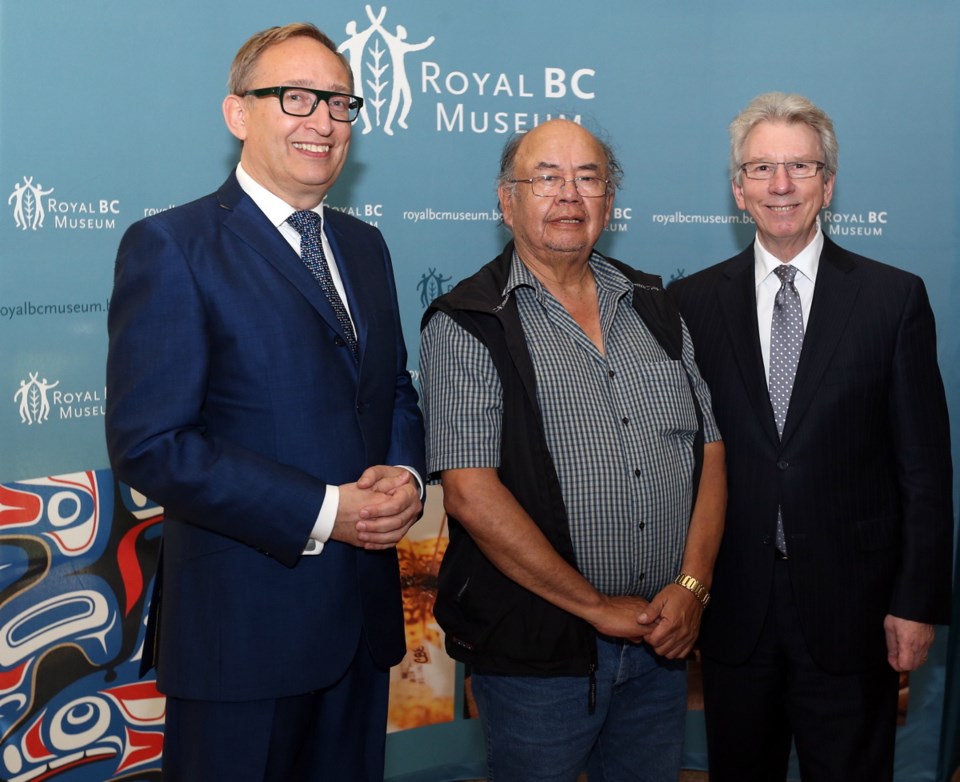The new Our Living Languages exhibit at the Royal B.C. Museum is one of the main reasons the cultural arm of the United Nations decided to hold its national annual conference in Victoria this week.
“This exhibit was a very important factor, as were the aboriginal programs at the University of Victoria,” said Axel Meisen, president of the Canadian Commission for the United Nations Educational, Scientific and Cultural Organization (UNESCO).
“Aboriginal languages are part of human heritage and windows into culture. Our goal is to have a lively discussion around languages and explore the ideas and links to UNESCO.”
The Canadian Commission for UNESCO’s mandate is to connect Canadians with the work of UNESCO. Its three-day conference, co-hosted with the museum and UVic, wraps up today. This is the first time the meeting has been held in Victoria.
Our Living Languages is a three-year exhibit, presented in partnership with the First Peoples’ Cultural Council, that explores First Nations languages in B.C. The exhibit opens to the public on June 21, but conference delegates were given a sneak peek at a welcome gala on Thursday night.
“The key thing in having UNESCO here is highlighting the richness and diversity of B.C. on a global stage,” said Jack Lohman, chief executive officer of the museum.
The Esquimalt Dancers opened the evening’s events with a paddle welcome song and hereditary Chief Andy Thomas (Seenupin) offered the delegates some context.
“Our village site was once just over there, where the legislature now sits,” Thomas said.
He explained how Sir James Douglas told his great-great-great grandfather that more settlers would come, how his people travelled by canoe to find fresh water and seclusion in their current community in Plumber Bay, and how the grandfathers of the local nations signed the Douglas Treaties.
“We’re trying to hang on to our languages,” he said. “It took a long time to find the resources … but it’s important. It’s the language of this land.”
The content of the exhibit was developed by the First Peoples’ Cultural Council, with input from language champions in First Nations throughout the province.
“Most British Columbians have not been educated about the people on whose lands they’ve made their homes,” said council chairwoman Lorna Williams. “This exhibit will give them a glimpse of that. My wish is for them to see the diversity and to seek out and listen to the language from where they live.”
The interactive exhibit features audio samples from the 34 languages in B.C. — the most diverse language area in Canada — and art, video, artifacts and lullabies sung by First Nations children. Many of the languages are endangered.
While the majority of the exhibit is funded by the provincial and federal governments, the museum hopes to raise $25,000 through crowdsourcing to sustain the programming for the full three years. Its fundraising site is fundrazr.com/campaigns/5eD32.



